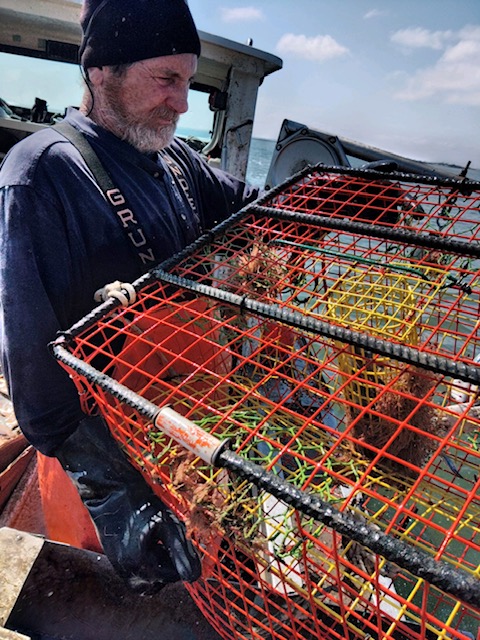By Bill Rauch
Careful readers will find another unanticipated cost of the growth explosion in the Bluffton area that was triggered by the Beaufort County Council’s unanimous 1991 vote to approve with few or no revisions Sun City Hilton Head’s proposed zoning.

Beaufort County’s top priority for 2016 is cleaning up the waters in its creeks and marshes, Council Chairman Paul Sommerville said last week. At the outset it appears County Council has demonstrated the necessary resolve to push the initiative forward.
It wasn’t, of course, all voluntary. The South Carolina Department of Health and Environmental Control (DHEC) was required recently by the Federal Government to take a look at Bluffton’s water quality and the government found that the County had to clean up Bluffton, or face fines.
Attracted in 2013 by the shellfish beds near US 278 that were being restricted or closed because of stormwater runoff from parking lots in the Bluffton area, DHEC put Beaufort County on notice in 2014 that it must begin phasing in the infrastructure to bring the county into compliance with the Federal Municipal Separate Storm Sewer System (MS4) requirements, or find itself in violation of the US Clean Water Act and face fines of up to $37,500 a day. Beaufort County now has about 11 months to take substantial steps to satisfy DHEC that it is cleaning up its waters, or face fines. Bluffton was targeted, according to DHEC’s public affairs chief Jim Beasley, because, of its recent growth, it now meets the criteria under the US Census Bureau’s definitions of an “urbanized area.”
That is the series of events that led to the County recently raising its stormwater fees.
“Everyone’s paying more,” the County’s Director of Environmental Engineering Eric Larson who directs the Stormwater Utility said last week.
No doubt about that. The department’s budgeted revenues from fees in FY’16 are $5,555,030, up nearly double from the $3,080,341 collected in FY’15.
Ironically, the waters in the northern part of Beaufort County will see more benefit from the county’s MS4 program than will those in the south. That’s because there are more shellfish beds closed in the northern part of the county than in the South. The difference is the shellfish beds around Port Royal Island (especially around the municipalities of Beaufort and Port Royal) have been closed for decades because of the fresh water and pollutants that accompany stormwater runoff from the streets and ditches that were built there before “runoff” was even a word in the dictionary, and because Port Royal Island is not defined by the US Census as an “urbanized area.”
Starting with a $327,000 “up-fit” of the county’s own parking lot at Boundary and Ribaut Road, the 2016 MS4 capital improvements program calls for a number of projects that will clean up Battery Creek. These are accompanied by runoff control projects to clean up Factory Creek and Albergotti Creek as well. There are an approximately equal number of similar projects to be undertaken in the Bluffton area.
But, make no mistake, it was the newly-closed shellfish beds in the “urbanized area” around Bluffton that drew DHEC’s attention to Beaufort County and required the state to impose the Federal mandate which, in order to comply, caused Beaufort County to have to nearly double its stormwater fees.
None of this is to imply that Beaufort County doesn’t want the waters here to be clean and isn’t willing to go to the mat to ensure that they are. The county’s resolve was demonstrated clearly this past December 3rd when it sent a team of lawyers into Circuit Court to seek to persuade Judge Mullen that Jenkins Creek Marine and Charters Lic, plaintiff et al VS Beaufort County (sometimes called “The Jellyball Case”) should be dismissed with prejudice.
Readers will recall earlier this year the jellyball refiners were making another run at Beaufort County, especially in the Lobeco and Corners neighborhoods. But by passing an ordinance prohibiting discharging jellyball effluent into Beaufort County waters the county government effectively shut down their plans. The Jenkins Creek Marine case is the lawsuit that the jellyball companies brought against Beaufort County that sought to find unconstitutional the county’s ordinance. The case is being dismissed. The difference between the case being dismissed with or without prejudice relates simply to whether at a later date the plaintiffs can reinvigorate their present case, or whether to challenge the ordinance at a future date they must bring a new one.
But it is equally clear that the county’s $20.6M stormwater capital improvements program would not have been jammed into place and the fees nearly doubled overnight to pay for it had not the stormwater runoff from the newly developed areas in the “urbanized area” around Bluffton lit up the warning lights at DHEC in Columbia. Taxpayers in the northern part of Beaufort County can add these costs to the increased costs of schools, roads and other government services for Bluffton that they have been asked to bear over the past two decades as a result of County Council’s unanimous 1991 vote.




